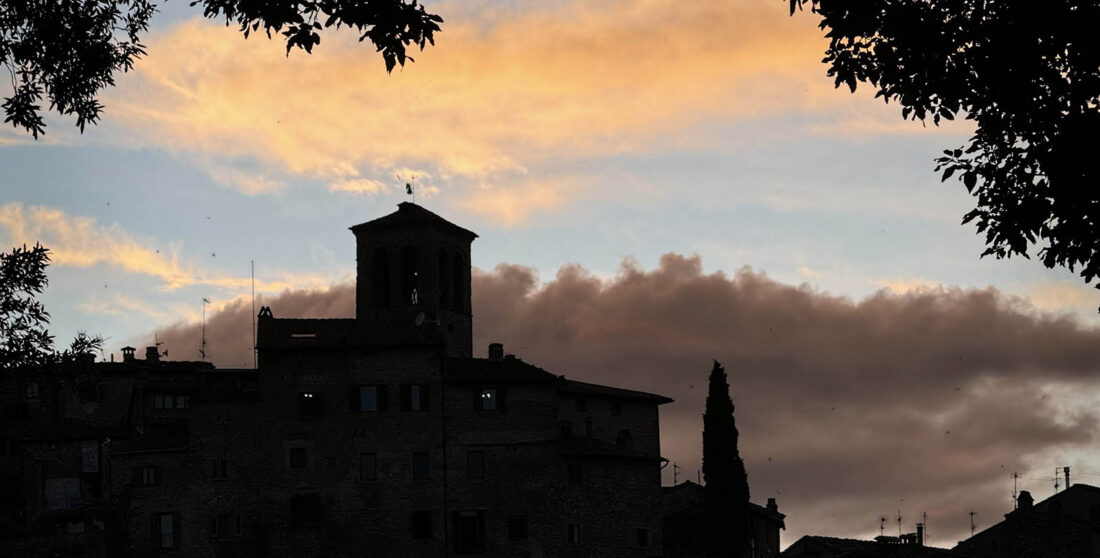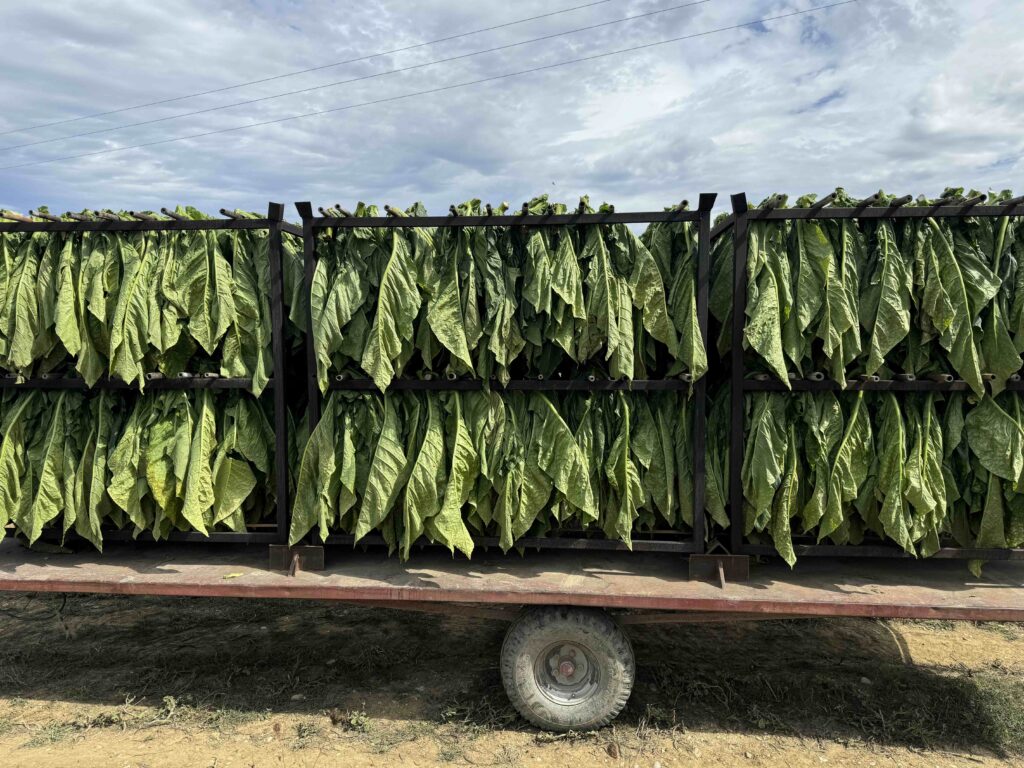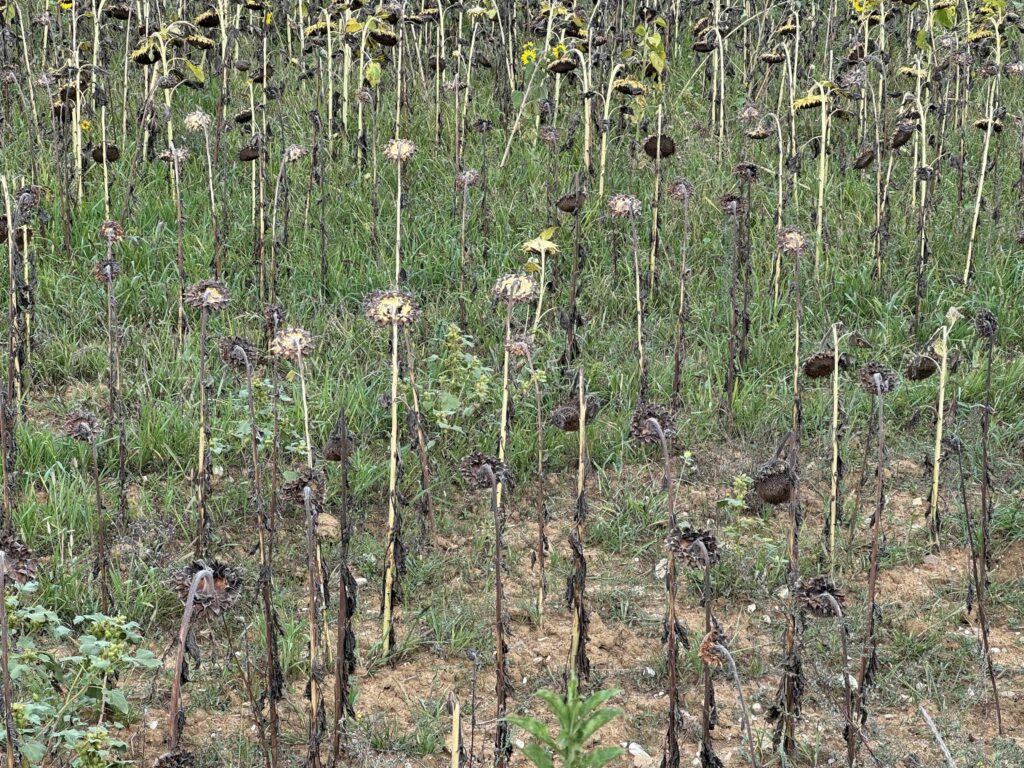
The Joys of Autumn
One day, everything is different. Growing up in Florida, then living most of my adult life in California, I’m used to a more gradual shift into Fall, but here in Tuscany it’s a precipice, like stepping from one room into another. During the first week of September the scorching, take-no-prisoners heat of summer abruptly changes. So does nearly everything else. Here’s what I notice, and love, about Fall.
The hunt
I woke up on September 1st at 7:00 am sharp. Not because I had transitioned from sleep in a gentle hug from the conscious world kind of way, but was jolted awake by the sounds of gunshots. Hunting season had started. Officially, the guns can be shot at 7 am and clearly there was not a moment to waste. These guys (I think exclusively) were shooting in the valley we overlook and the sound ricochets. As the shots came from that direction it must be birds they are after—pheasants, partridges, and the occasional hare. The cinghiale, or wild boar, hunters are usually in the woods, only affecting my walks—and the boar. There’s nothing like a group of armed men dressed in orange shooting their guns, with packs of barking hunting dogs, and danger signs on the trail, to interrupt a “forest bathing” mood.
I have yet to infiltrate the close knit group of hunters, although I once tried. They meet at a bar very early in the morning to fortify themselves with caffè corretto, or corrected coffee. “Corrected with what?” you might ask. Take your pick of grappa, sambuca, brandy, or whiskey. They have a couple of these and then go out and stand in a big circle shooting at the boars in the center. Nothing to be alarmed about. This could be the reason they don’t want me along.

Cinghiale
The wild boar, or cinghiale, come in close to the village for safety, trying to avoid the hunters. As our land hugs the village’s defensive walls, this often means they are living in, or passing through, our yard, which is 10 acres. They have a lot of babies, so we often look out our windows to see a family of eight to ten, sometimes mere yards from our house. It turns out that they have a passion for the lemongrass I’ve planted, as I can’t buy it locally. (Pork with lemongrass. Yum.) They are cute in the abstract, or further away from the house, but dangerous and destructive in the garden. One evening, John and I returned in our car after dark, parking at the back of the house. We got out of our car and heard at least two boar, on opposite sides of the house, and there was no way to get to the front door without chasing them away. Not for the faint of heart.
John’s idea was to get firecrackers and throw them out the window when he hears them, to discourage getting too comfy in our foliage. We were recently buying some pretty big fireworks to set off for a friend’s wedding, and John asked the owner for the most powerful firecrackers he had. The bright yellow “Titan” firecrackers were produced from the vault. The label warns that these are “not to be used for fun”. An acceptable use, according to the label, is to “frighten wild animals”. Last night John threw some in the direction of a happy family of boar in the field and said that he could feel the recoil. Amazingly, this plan seems to be working as there are fewer boar in our yard.
Firecrackers are often set off by pre-teen boys under the walls of town, seemingly an unending source of fun for them, and terror for our dog, Lola. She particularly hates it when John hurls firecrackers from our windows. This is not the way a senior member of the pack is supposed to behave and it upsets her to an alarming degree. She leaps into my arms in bed with her heart pounding. We hope that the local boys can’t get their hands on Titans, as we will never sleep again. Usually the places where one buys these things are pretty careful not to sell anything to powerful to kids, but eight-year-old Sebastian was able to purchase, without our knowledge, some firecrackers from “under the counter” at one of the local tobacco shops. These were all shot off within minutes.

Tobacco
Along with the sound of gunfire, the most common thing I wake up to in the Fall is the smell of the smoke from the fires used to dry tobacco. This area grows a lot of tobacco. Some native friends swear that it is some of the finest tobacco in the world. The rest say it is garbage. Not knowing my tobacco I cannot weigh in. All I know is that whenever there’s a movement to limit growing it in any way it is defeated in the local elections. Tobacco is big money, partially subsidized by the government and the E.U. for reasons driven more by votes than public health.
The tiny plants go in at the height of summer, after the cover crops are plowed under, usually fava beans. The tobacco plants grow quickly, aided by copious amounts of irrigated water and tanks full of toxic sprays. At this time of year, pickers are out harvesting individual leaves and hanging them upside down on frames pulled by tractors. These frames are then placed in barns around a fire where they are dried until golden brown—a smell that wafts across the valley. As our house is within sight of two of these drying barns, we get exposed to quite a bit of the smell when the wind blows in a certain direction. Sometimes I kind of like it. Our kids have said that this smell represents Fall for them. But it has started to get to me more and occasionally is quite irritating—on the days when the smell is strong I often wake up congested and with eyes burning. A village friend with lung damage from the mold in New Orleans after Hurricane Katrina has a great deal of difficulty breathing during this season. Nothing to be done about this except for an air filter, which we just fetched from our attic storage.
As the tobacco moves from the fields to the drying barns there’s usually a road involved. Which means that most times I’m driving anywhere—on narrow country roads—there’s a loaded tractor to pass. They are very slow, as one might expect, so this is less of a problem than other forms of passing.

Sunflowers
When I say “sunflower” and ask you to picture something in your mind, those gorgeous yellow flowers that might pop up first are only a short part of the flower’s life cycle. Before they are ready to harvest, with a fascinating machine that cuts them off at about three feet high and digests the seeds, spitting out the rest of the flower and stem onto the ground, they need to get totally and completely dry. Meaning totally black and dead. I actually think they are quite beautiful in this state, in a Morticia Addams kind of way. Everywhere I go fields are being completely transformed from summer to winter, sometimes in just a day.
Swimming
Last time I wrote about how the pool saves my life during the hot weather. When it was still scorching at the end of August I asked the owner how much longer the pool would stay open. He looked at me like I was crazy and said “Until the 1st, of course.” After that milestone things cool down and school starts. Absolutely no need for a pool. The precipice of Fall.
The views
The air is crystal clear, despite the tobacco drying, and you can see for miles, finally breaking the haze of the summer high pressure zones. The angle of the sun makes all the colors pop in an extraordinary way. And the clouds are just as beautiful as the mountains and fields. Global warming is making the clouds more spectacular, a small silver lining.

Sagre
Fall is the season for harvest festivals, called sagre. Each village, and sometimes even a tinier hamlet, has their own festival. Last night, we went to a nearby local village for a celebration of polenta. Yes, that’s correct, polenta. Polenta is cooked in huge vats, stirred by volunteers with big wooden paddles. It’s served with either a mushroom topping, or meat ragu, in plastic bowls to thousands of people seated at long tables in tents. These festivals are one of my favorite things about the season. I will write more after I go to the ciaccia fritta festival in a tiny hamlet in the suburbs of our small village. Ciaccia fritta is a Tuscan delicacy—fried dough—every bit as delicious, and heavy, as one would expect.
Thanks, once again, for reading and to my new subscribers—some even paid—much to my amazement. It’s an honor to have your time and support. Ci vediamo presto—we’ll see each other soon.






No Comments